Effects of continuous positive airway pressure (CPAP) therapy on neurological and functional rehabilitation in Basal Ganglia Stroke patients with obstructive sleep apnea: A prospective multicenter study
- PMID: 31305423
- PMCID: PMC6641828
- DOI: 10.1097/MD.0000000000016344
Effects of continuous positive airway pressure (CPAP) therapy on neurological and functional rehabilitation in Basal Ganglia Stroke patients with obstructive sleep apnea: A prospective multicenter study
Abstract
Obstructive sleep apnea (OSA) adversely affects neurological recovery. This study aimed to determine the impact of continuous positive airway pressure (CPAP) and/or rehabilitation in basal ganglia stroke patients with OSA.A prospective controlled trial was conducted in 2015-2018. The subjects received routine rehabilitation training for up to 2 years and were assigned to the intervention and control groups treated with CPAP or without, respectively. Then, treatment effects on sleep parameters, motor function, stroke severity, daily life activities, cognitive function, and psychological states were assessed at different time points.At 6 months, the CPAP group showed significantly lower mean apnea-hypopnea index (AHI), percentage of time with SpO2 at <90% (TS90%), micro-arousal index, and percentages of time in non-rapid eye movement (non-REM) stages 1-2 and REM stage in total sleeping time compared with the control group, and significantly higher mean minimum of peripheral oxygen saturation (L-SaO2%) and percentage of time in stage 3 (P < .001) sleep. The CPAP group showed significant improvements in average the National Institutes of Health Stroke Scale (NIHSS), Fugl-Meyer assessment scale (FMA), Barthel index (BI), Minimental state examination (MMSE), Hamilton anxiety scale (HAMA) and Hamilton depression rating scale for depression (HRSD) scores at different times versus the control group, respectively (P < .05). However, no difference in body mass index (BMI) management was observed (P > .05). Repeated-measures ANOVA revealed significant interactions between the two groups for change in FMA, MMSE, BI, HAMA, and HRSD scores from admission to 24 months (P < .001), but no significant was found for BMI (P = .582).Basal ganglia stroke patients with OSA tend to have significantly greater sleeping, neurological and functional recovery after CPAP, and rehabilitation over 2 years.
Conflict of interest statement
The authors declare that there is no conflict of interest.
Figures
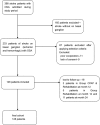
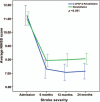
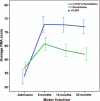
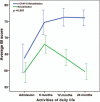
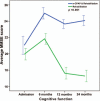
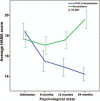
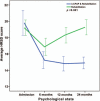
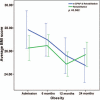
References
-
- Rothwell PM. AVERT: a major milestone in stroke research. Lancet 2015;386:7–9. - PubMed
-
- Slomka A, Switonska M, Sinkiewicz W, et al. Assessing circulating factor VIIa-antithrombin complexes in acute ischemic stroke: a pilot study. Clin Appl Thromb Hemost 2017;23:351–9. - PubMed
-
- Di Raimondo D, Tuttolomondo A, Butta C, et al. Effects of ACE-inhibitors and angiotensin receptor blockers on inflammation. Curr Pharm Des 2012;18:4385–413. - PubMed
Publication types
MeSH terms
LinkOut - more resources
Full Text Sources
Medical

